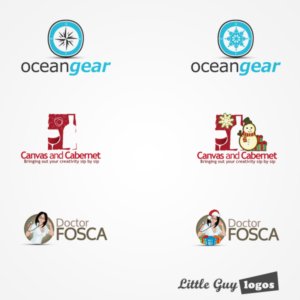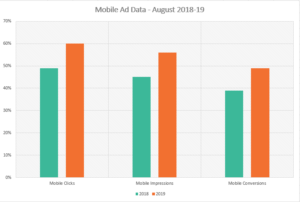Top 5 Digital Marketing Trends of 2020
Marketing is one of the fastest-changing professions today. With that, you never want to find yourself stuck in a rut or using outdated strategy. As the end of the year approaches, it’s the perfect time to research up on the digital marketing trends to come. With that, here are our predictions for the top 5 trends in digital marketing for 2020:
Conversational Marketing
Conversational marketing, including live chat and chat bots, will continue to be an important factor of digital marketing in 2020. AI-based technology uses instant messaging to chat in real-time with customers and site visitors. Many customers actually prefer interacting with chat bots. They are responsive 24/7, give answers promptly, accurately recall your entire buying history, and never lose patience. These virtual assistants offer outstanding customer service by meeting customers’ expectations and automating repetitive tasks.
That doesn’t mean other conversation strategies should be forgotten. While direct messaging may take more effort, it offers a way to get more personal with customers. It’s also a way to streamline customer service and assist in sales. Through messaging apps or private messaging on social media, brands are building stronger connections with their customers. These forums offer the convenience of text with the immediacy of a phone conversation, all in an environment the user is already familiar with from talking with friends. This technique works best when you encourage users to message you by providing your handle or username, and incentivizing them with an exclusive deal or coupon code.
Mass Personalization
Increased data collection and advancements in technology have already had a huge impact on the level of personalization that is possible between brands and consumers. Today consumers are constantly flooded with marketing messages from multiple channels to the point where they have learned to completely ignore them. Traditional advertising has lost almost all traction and companies must adapt to remain relevant. When customers have endless options for websites and social platforms, customers are looking for what’s most personal. Personalized marketing messages can forge a real connection between brands and their customers. 80% of consumers said that they’d be more likely to do business with a brand that provides a personalized experience. This doesn’t just mean changing the name of your emails to fit the person you’re addressing. Improvements in technology such as AI combined with increased data collection and insights from social media and other sources have made it possible and easy to hyper-personalize everything from content to design to product recommendations and everything in-between.
Video Marketing
Video marketing was one of the top performing tactics of 2019 and it’s only expected to increase in value in 2020. Video is by far the most popular way consumers learn about new products today, and this goes far beyond just YouTube. Video can be utilized across all social platforms, Instagram, Facebook, and Twitter especially. With the growing shift to mobile, marketers don’t have to worry about reformatting long sales pages or emails. Videos can present the same information, if not more, in a format that works regardless of device.
Video content is also a great driver of SEO. A study found that if a site includes video, it’s 50 times more likely to show up organically in search results. Since video content has been such a driver of traffic, Google detects that, and thus pushes pages that includes video higher up in the rankings.
Here are some video marketing statistics to keep in mind when creating your marketing strategy for the coming year:
- 70% of consumers say that they have shared a brand’s video.
- 72% of businesses say video has improved their conversion rate.
- 52% of consumers say that watching product videos makes them more confident in online purchase decisions.
- 65% of executives visit the marketer’s website and 39% call a vendor after viewing a video.
Shoppable Posts and Social Commerce
Social commerce refers to buying products directly through social media posts or ads, meaning users don’t have to leave the app to make a purchase. This is a trend that started on Instagram in 2019, but is quickly spreading across a variety of channels and is extremely valuable for online stores. For the longest time, online businesses were struggling to find ways to get their social media followers to visit their websites, and now they don’t even have to. At least 54% of people on social media use it to research product purchases. Shoppable posts accomplishes the long-time goal of selling directly on social media and decreases the chances of sales abandonment.
If your business uses Shopify it’s extremely easy to create shoppable posts. Linking accounts (such as Instagram) is simple or you can install plugins (which is better for Snapchat). If you don’t have a Shopify account, you may have to create stores in additional places to qualify. Pinterest is another platform that should be considered, as it was one of the first to offer shoppable posts.
Consumer Privacy
Over the past year data privacy has increasingly become a concern for consumers after learning of multiple security breaches on search engines and social platforms. Consumers taking ownership of their data and property rights has been a growing trend in 2019 and is expected only get stronger going into 2020. Not only are consumers’ concerns growing, but new legislation, such as EU ePrivacy, is getting passed that prohibits the practice of certain data tracking. As privacy increases in importance, traditional data tracking strategies will likely no longer be a suitable way to pursue leads and revenue. People want to know they can trust brands, and that their personal data is safe. Instead of being complacent, digital marketing teams should get strategic to reinforce their commitment to privacy so they can earn the trust of potential customers.
Final Thoughts
The upcoming 2020 digital marketing trends utilize both human and automated intelligence. Both are being used to create more personalized experiences for consumers. No matter the trends, the goal remains the same – getting people what they want, when and where they want it. The increasing technological abilities to come in 2020 are only making that easier.
More From Onimod Global
To catch up on the latest digital marketing news and trends, click here. To find out more about who we are and what we do, click here!



